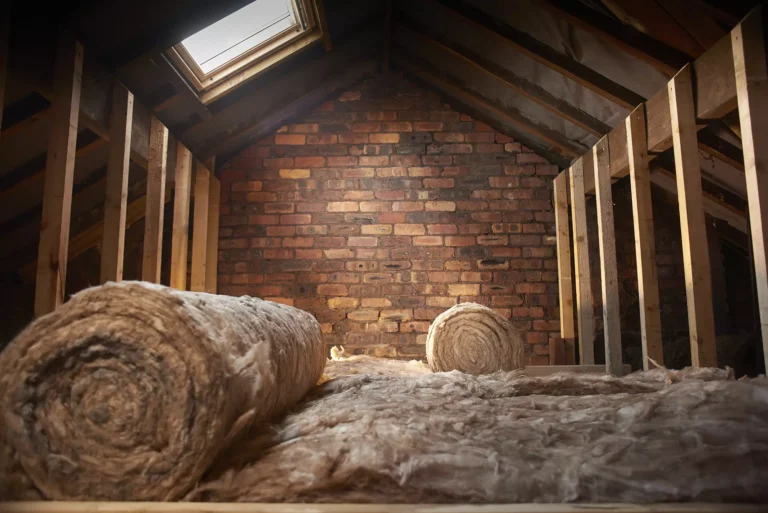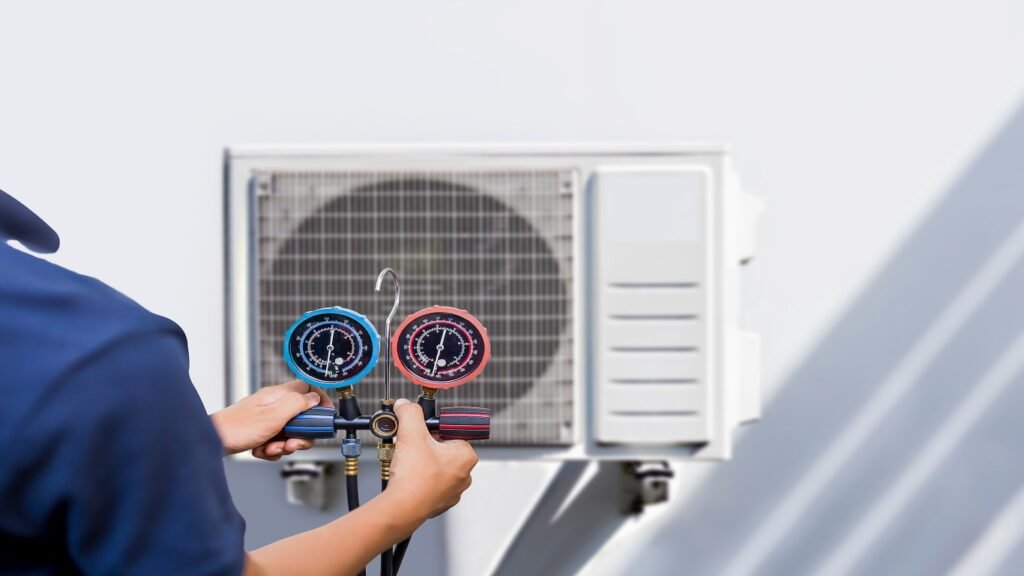Blog
Comparing Heat Pumps vs. Traditional HVAC Systems: Which Is Right for You
Comparing Heat Pumps vs. Traditional HVAC Systems $ Choosing the right heating and cooling system for your home is more than just a matter of comfort—it’s a decision that affects your energy bills, maintenance costs, and long-term sustainability. In today’s market, homeowners are faced with two popular options: heat pumps and traditional HVAC systems. Each has its advantages depending on climate, home size, energy goals, and budget. Whether you’re upgrading an old system or building a new home, understanding how these technologies compare will help you make a smart, efficient, and cost-effective choice. Let’s explore how heat pumps stack up against conventional HVAC systems across several key factors.
What Is a Heat Pump and How Does It Work?
A heat pump is an energy-efficient HVAC system that provides both heating and cooling by transferring heat rather than generating it. Unlike traditional systems that burn fuel or rely heavily on electricity to create warmth, a heat pump works by extracting heat from the outside air (even in cold temperatures) and transferring it indoors during winter. In the summer, the process reverses—removing heat from your home and releasing it outside to cool your space. Heat pumps use a refrigerant cycle, similar to what’s found in refrigerators and air conditioners, and typically consist of an indoor air handler and an outdoor unit. They are especially efficient in moderate climates and are valued for their eco-friendly operation and long-term savings.
Key Features of Heat Pumps:
-
Dual Functionality: Provides both heating and cooling in a single system.
-
Energy Efficient: Transfers heat rather than generating it, reducing energy consumption.
-
Environmentally Friendly: Emits fewer greenhouse gases compared to fuel-based systems.
-
Quiet Operation: Modern heat pumps run quietly, enhancing indoor comfort.
-
Incentives Available: May qualify for government rebates or energy-efficiency incentives.
Understanding Traditional HVAC Systems: Components and Functionality
Traditional HVAC systems usually include a furnace (for heating), air conditioner (for cooling), and ductwork for air distribution. These systems rely on fuel combustion (natural gas, propane, or oil) or electric resistance to generate heat and use a separate AC unit for cooling. They’re widely used across North America and are especially effective in extremely cold climates where heat pumps may struggle. Although efficient in specific conditions, they often consume more energy and produce more greenhouse gases compared to heat pumps.
Key Features of Traditional HVAC Systems:
-
Separate Units: One for heating (furnace) and one for cooling (air conditioner).
-
Fuel-Based Heating: Often reliant on gas or oil, depending on region.
-
Effective in Cold Climates: Performs well in sub-zero temperatures.
-
Longstanding Technology: Familiar to most technicians and homeowners.
-
Higher Emissions: Greater carbon footprint compared to modern alternatives.
🔥 Upgrade to a High-Efficiency Heat Pump Today!
Experience year-round comfort and significant energy savings with our professional heat pump installation services.
👉 Explore Our: Heat Pump Services
Energy Efficiency: Heat Pumps vs. Traditional HVAC Systems
Energy efficiency is a critical factor for homeowners looking to reduce utility bills and minimize their carbon footprint. Heat pumps are known for their impressive energy efficiency because they transfer heat rather than generate it. This means they use significantly less electricity than electric furnaces or traditional systems that rely on combustion. For example, a high-efficiency heat pump can produce up to three times more heating energy than it consumes in electrical energy—something no furnace can match.
Traditional HVAC systems, especially older models, are less efficient by design. Furnaces that burn natural gas or oil lose a portion of energy through exhaust gases, while standard air conditioners can draw a lot of power during peak summer months. While newer high-efficiency furnaces (up to 98% AFUE) are available, they still can’t compete with the energy output-to-input ratio of heat pumps.
Energy Efficiency Takeaways:
-
✅ Heat Pumps: 300–400% efficiency in moderate climates.
-
⚡ Traditional Furnaces: 80–98% AFUE efficiency, depending on model.
-
💰 Lower Bills: Heat pumps use less energy, saving on electricity and gas.
-
🌿 Sustainable Choice: Especially effective when paired with solar panels or clean energy sources.

Installation Costs and Long-Term Savings Compared
Upfront installation costs vary between systems. Heat pumps generally have a higher initial price tag due to the technology and dual-functionality setup. However, the long-term energy savings often outweigh the initial expense. Traditional HVAC systems may be cheaper to install initially, especially if your home already has ductwork and gas lines, but the ongoing fuel and maintenance costs can add up quickly.
Cost Considerations:
-
Heat Pumps: Higher initial investment, lower long-term costs.
-
Traditional HVAC: Lower upfront cost, higher ongoing energy expenses.
-
Incentives: Heat pumps often qualify for rebates and tax credits.
-
Return on Investment: Heat pumps pay off over time through energy savings.
💰 Get Money Back While Saving Energy!
Discover government rebate programs available for energy-efficient upgrades like insulation and heat pumps. We’ll help you qualify and apply.
👉 Learn About Our: Insulation Rebate
Climate Suitability: Which System Performs Better in Your Region?
Your local climate plays a major role in deciding between a heat pump and a traditional HVAC system. Heat pumps perform best in moderate to warm climates, where winter temperatures rarely drop below freezing. In these regions, they provide both heating and cooling efficiently, making them an excellent year-round solution. However, their performance can decrease significantly in very cold climates unless you invest in a cold-climate heat pump or pair it with a backup heat source.
On the flip side, traditional HVAC systems—particularly gas furnaces—are better equipped to handle extremely cold environments, as they generate heat directly rather than relying on extracting heat from the air. If you live in places where winter temperatures dip below -15°C, a traditional system or a dual-fuel hybrid system might offer more consistent comfort.
Climate Suitability Tips:
-
🌡️ Mild/Coastal Regions: Heat pumps are ideal and energy-efficient.
-
❄️ Cold Northern Climates: Traditional systems provide better heating reliability.
-
🔁 Hybrid Systems: Combine heat pump + gas furnace for year-round flexibility.
-
🗺️ Location Matters: Consider local utility rates and climate data before choosing.
Environmental Impact: Which Option Is Greener?
Heat pumps shine when it comes to environmental sustainability. They run on electricity and produce fewer carbon emissions than systems that burn fossil fuels. As more electrical grids shift to renewable energy sources, the green benefits of heat pumps grow stronger. On the other hand, traditional HVAC systems, especially those powered by gas or oil, contribute significantly to greenhouse gas emissions.
Environmental Pros & Cons:
-
Heat Pumps: Lower carbon footprint and cleaner energy use.
-
Traditional HVAC: Higher emissions from fossil fuel use.
-
Renewable Compatibility: Heat pumps align well with solar and other green systems.
-
Eco-Conscious Choice: Ideal for homeowners looking to reduce environmental impact.

Heating and Cooling Performance: A Side-by-Side Comparison
When it comes to performance, both systems have their strengths and trade-offs depending on the season and temperature demands. Heat pumps are excellent for providing balanced indoor comfort year-round. They’re designed to handle both heating and cooling using a single unit, with seamless transitions between modes. This is a major advantage for homeowners who value simplicity and consistency.
However, during extreme cold, heat pumps may not be able to keep up with heating demands without a backup heat source. Traditional HVAC systems—especially powerful gas or oil furnaces—can deliver high levels of heat output quickly, making them ideal for the coldest climates. In cooling mode, both systems perform similarly, though modern high-SEER heat pumps can sometimes outpace standard air conditioners in energy use and temperature control.
Performance Comparison Summary:
-
🔁 Heat Pumps: Versatile, reliable in mild climates, and efficient year-round.
-
🔥 Traditional Furnaces: More powerful in harsh winter conditions.
-
❄️ Cooling Performance: Comparable, but newer heat pumps may be more efficient.
-
⏱️ Response Time: Traditional systems may heat faster in extreme cold.
🔍 Not Sure What’s Right for Your Home?
Schedule a professional Home Energy Audit to identify exactly where your home is losing energy and what upgrades can save you the most.
👉 Book Your: Home Energy Audit
Maintenance Requirements: What to Expect from Each System
Regular maintenance is essential for both systems, but the scope and frequency may differ. Heat pumps require seasonal inspections to keep refrigerant levels and airflow in check. Since they operate year-round, they may need more attention. Traditional systems often have separate maintenance routines for furnaces and ACs, including filter changes, burner checks, and duct cleaning.
Maintenance Overview:
-
Heat Pumps: Bi-annual servicing (spring and fall).
-
Traditional HVAC: Separate maintenance for furnace and AC.
-
Maintenance Costs: Can be higher for traditional systems due to dual components.
-
Lifespan Considerations: Proper care can extend life for both system types.
Lifespan and Durability: Heat Pumps vs. HVAC Units
The lifespan and durability of your HVAC system affect your long-term cost and maintenance planning. On average, heat pumps last 10–15 years, but because they operate year-round for both heating and cooling, they often experience more wear and tear compared to systems that rest during one season. However, with proper maintenance and the right climate, heat pumps can serve reliably for many years.
Traditional HVAC systems typically include two separate units—a furnace and an air conditioner. These components often last 15–20 years, depending on how frequently they are used and how well they’re maintained. One benefit of having separate units is that each system gets a break during half the year, potentially extending their service life.
Durability & Lifespan Insights:
-
📆 Heat Pumps: 10–15 years; continuous use may reduce lifespan.
-
🧊 AC Units + Furnaces: 15–20 years with seasonal usage and proper care.
-
🛠️ Maintenance Matters: Lifespan depends heavily on regular servicing.
-
🏡 System Matching: Choose equipment appropriate for your home size and usage needs.
Which System Is Best for Your Home? Making the Final Decision
Choosing between a heat pump and a traditional HVAC system depends on your climate, budget, energy goals, and home setup. If you live in a temperate region and want to reduce your carbon footprint, a heat pump is likely your best choice. If you’re in a colder climate with access to affordable gas, a traditional furnace/AC combo might serve you better. Consider also government incentives, long-term energy savings, and environmental goals when making your decision.
Decision-Making Tips:
-
Assess Your Climate: Cold vs. moderate zones.
-
Calculate Total Costs: Initial + long-term energy use.
-
Consider Green Goals: Emissions and sustainability.
-
Consult a Professional: Get a home energy audit or HVAC assessment.
Conclusion
There’s no one-size-fits-all answer when it comes to choosing between a heat pump and a traditional HVAC system. Heat pumps offer unmatched energy efficiency and year-round performance, especially in moderate climates, while traditional HVAC systems deliver robust heating in extreme cold and time-tested durability. The best solution depends on your home’s location, energy needs, and your desire for sustainability. By understanding the unique benefits and limitations of both systems, you can confidently choose the HVAC setup that aligns with your comfort goals and budget. Need help deciding or installing the right system? Our experts are here to guide you every step of the way.
more insights

Is There Asbestos in Your Loft? What to Know Before Insulation Removal
If your home was built before the 1990s, there’s a chance that your loft insulation could contain asbestos—a hidden danger

Best Heat Pumps for Cold Climates in Canada: Top Picks for 2025
Canadian winters are no joke, and heating your home efficiently is more important than ever. In 2025, cold climate heat

Top 5 Signs Your Basement Needs New Basement Insulation (and What to Do About It)
Your basement plays a huge role in your home’s comfort, energy efficiency, and even air quality—but only if it’s properly


